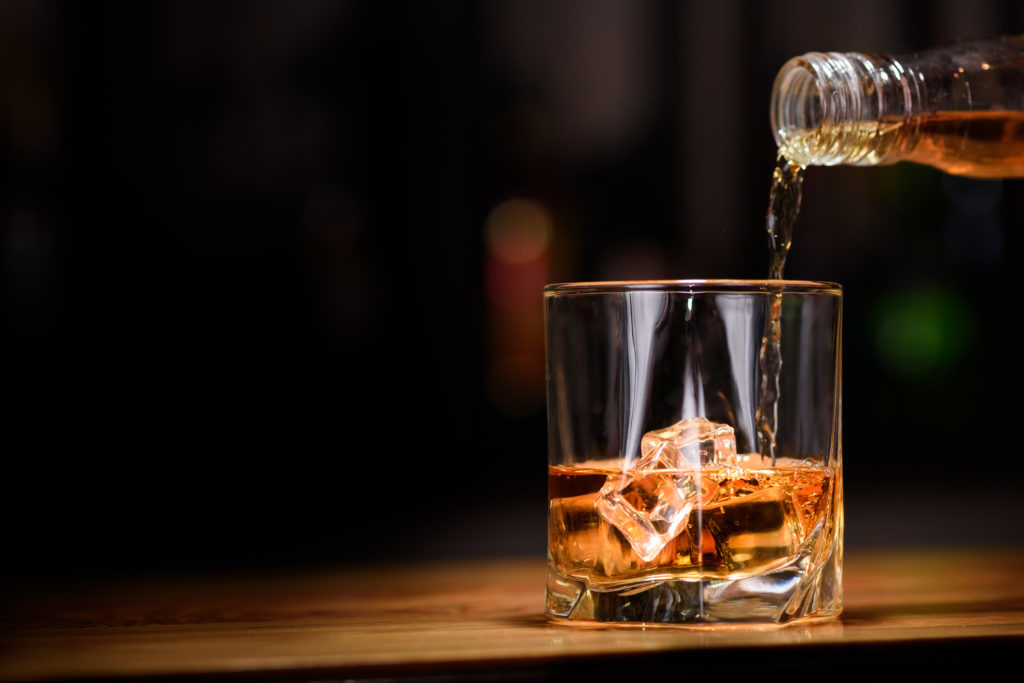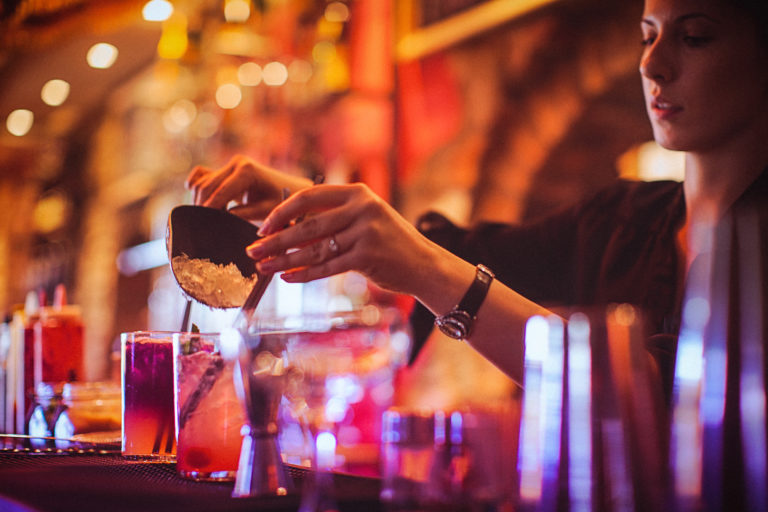
As a restaurant or bar owner, you’re paying attention to a lot of things at once. Food costs, staff turnover, increasing foot traffic, building a reliable customer base of “regulars”. Juggling all these priorities at once can feel overwhelming.
I’ve been there with you.
As owners, we tend to focus on big ticket items, the things that we believe have the largest impact on our bottom line. Sometimes however, minor changes and seemingly seemingly insignificant details can make a profound impact. There are plenty of blog posts out there talking about how to lower your costs, design a drink menu, tweak your margins, and retain quality staff members. But there are many little things that often get overlooked.
In fact, your new and improved profits could come from an unexpected place:
Ice.
Yes, you read that correctly. The amount of ice you use in your drinks has a dramatic impact on the profitability of the drinks you serve.
And according to Bevspot, the average bar’s pour cost per cocktail – your hard costs before you make any money on those drinks – is between 18 and 24%.

I can’t tell you how many mixed cocktails I’ve been served with less than a quarter of the glass filled with ice. Every time I see this, I shake my head. Why? Because by using too little ice, you dramatically reduce the profitability of your bar.
Most owners are surprised to learn that if they were to increase the amount of ice in their drinks from ¼ to ½ or even ¾, they’d probably double their profitability per drink.
Not only that, but because your customers are going through the drinks faster, you’re probably going to increase the total number of drinks ordered as well. Not only is it more profitable, but it tastes better too.
The cocktail pro’s over at The Spruce Eats say that for best results, it’s customary to fill a glass or shaker two-thirds full with ice, which is about one cup or five to six standard ice cubes. A customer is going to go through that vodka cranberry much faster, and they’re going to order another one now too.
It might seem trivial, but over the course of hundreds of drinks, your profits will really start to add up.

Ryan Gromfin over at therestaurantboss.com says that one of the biggest problems he sees is his clients using too little ice, and too much mixer, ultimately leading to drinks tasting “watered-down”.
He even goes so far as to recommend you pack down the glass full of ice up to the rim. This is especially true for liquor primary establishments like bars and nightclubs. In the case of nightclubs, drinks are their only source of revenue besides cover charge, meaning their businesses success rests almost entirely on the margins of their drink menu.
So the question is, if the amount of ice you use in your drinks has such a large impact on your businesses profitability, why doesn’t everyone monitor it? Why doesn’t every bar or restaurant have strict policies and procedures regarding their drink menu?
While sometimes they don’t know what they don’t know, more often than not, they usually do. Most owners are well aware of the importance of their drinks composition and have specifically outlined the ideal ingredient ratios. So what’s the problem?
The reality is, just because rules and procedures are in place, doesn’t mean they are followed. Most bartenders have a lot of drink orders to fill at any one time, and they don’t want to waste time on seemingly menial tasks. Ask any bartender how much they like refilling the ice box and you’ll quickly see what I’m talking about. Going into the back and replacing the ice is a pain in the ass.
So, put yourself in the shoes of a bartender for a monent:
You have a long list of drink orders you’re keeping track of, patrons are vying for your attention, asking for bills, placing orders, and you’re just trying to keep up.
You know that everytime you need to go out back into storage, you get further behind. How do you solve this problem? Easy, you just use less ice. If you cut down the ice you’re supposed to use in a drink, you make less trips out back, and have more time to focus on what you enjoy most, serving your customers.
What we have here is a good old fashioned agency problem, a conflict of interest. To a bartender, a little ice probably doesn’t seem like a big deal. But for the owner of a small bar or restaurant it is.
It’s a really big deal.
The trick then, is to ensure your bartenders understand the critical importance your drink composition has on the profitability of your business and the success of your team.
You’ll also probably want to think about how you can implement some rigor and structure into how your staff are trained in preparing drinks, and provide “cheat sheets” with liquor to ice ratios for your menu.

Increasing the amount of ice you use actually increases the perceived strength of the drink, since the fluid to liquor ratio is vastly improved
Now I know what you’re thinking. Won’t your customers be pissed off if they noticed that there’s more ice in their drinks? Won’t they storm the streets in protest and vow never to return again? Probably not. In fact, believe it or not, your customers may have the exact opposite reaction.
Why won’t your customers care if you put more ice in their drinks?
Because increasing the amount of ice you use actually increases the perceived strength of the drink as the fluid to liquor ratio is vastly improved.
Bar and Restaurant interviewed Jonathan Pogash, director of cocktail development for New York City’s Hospitality Holdings. He found that “A hard cube, lump cube or block of ice will dilute a drink at a much slower rate than your run-of-the-mill ice-machine ice cube,”
Pogash says. “If ice isn’t hard enough, it will melt too quickly and over-dilute the cocktail. A ‘wet’ ice cube is one that has been tarnished with excess water on its surface, thus allowing it to melt at a much quicker rate than desired.”
You can take this even further and chip pieces off a solid block of ice as opposed to using machine-made. Eater magazine found that these machines might make ice that dilutes drinks by as low as 60%, but a hard cube from chiseled ice might only dilute by 30%.
But besides the quality of ice you use, what else can you do?
Tom Macy, a cocktail expert, recommends stirring your ice into drinks instead, as “shaking chills and dilutes much faster than stirring.”
Think about it this way: When you use a fixed amount of liquor per drink, say a typical 1.5 oz shot, you still have to fill the rest of the glass. That glass can either be filled with liquid, or ice. The more liquid you use, the less the customer is going to taste the liquor. The more ice you use, the less liquid you use, and the easier it is to taste the liquor. For the most part, restaurants, bars, and nightclubs are preparing the same types of drinks. A gin and tonic is a gin and tonic, a vodka cran is a vodka cran, and mojio is a mojito. Don’t believe me?
Experiment with one or two drink items on your menu and see what happens:
Measure your profit per drink. Focussing on something as seemingly unimportant as ice might seem a tad silly, but the reality is, that’s exactly the type of thing that sets a successful bar or restaurant apart from the rest.
Successful owners pay attention to the details. So next time you go out to another restaurant or bar, take a look at the drink in front of you. What you find might just surprise you.
Need help with your bar or restaurant? Reach out to us to learn more how Hailo Data can save your business time and money.
"*" indicates required fields
1574 West 6th Avenue
Vancouver, BC
V6J 1R2
"*" indicates required fields